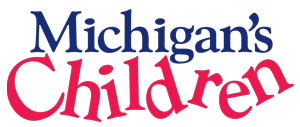Bold Steps Force Improvements in Our Child Care System
March 17, 2016 – On March 8th, my family welcomed Emmie to our lives as we grew to a family of four (technically five if you count Hobie the cat). Now with two children under the age of three, we have been preparing for what this means for our child care needs when I return to work from my maternity leave. It also has me thinking about the state of our child care system here in Michigan – much like I did just over two years ago when we were getting ready to send Lennon to child care.
Some things have shifted for the better in the past two years when it comes to our child care system. At the end of 2014, Congress reauthorized the federal Child Care and Development Block Grant (CCDBG) for the first time since 1996! We know quite a lot has shifted in terms of how child care is seen in our society since the ‘90s when it was primarily a work support for low-income working moms. Now integral and important not only for parents as a work-support but also as a critical partner in their children’s development, CCDBG reauthorization aims to improve the quality of care while also best supporting the needs of working parents.
CCDBG Reauthorization has been an important trigger, forcing states to look at their child care systems to figure out how to comply with these new regulations. Michigan took some important steps last year even before we had to begin complying with this new federal law.
First, we began providing 12-months of continuous eligibility regardless of whether or not parents’ income shifted during that time or experienced temporary job loss – an important shift for Michigan.
We also increased the income eligibility exit threshold meaning that now families don’t face an immediate child care cliff if they begin to make a little bit more money. Instead, families can continue to access the state’s child care subsidy until they hit 250 percent of the federal poverty level allowing families to experience some economic stability before losing their subsidy.
And finally, we began providing tiered reimbursement rates starting at 2-star rated programs, continuing to further incentivize families to access higher quality care and for higher quality child care programs to accept subsidized families.
Michigan also hired additional child care licensing consultants responsible for ensuring programs meet minimum health and safety requirements, though Michigan’s licensing consultants’ caseloads continue to remain higher than the national recommendation.
All of these important changes, however, were made because Michigan continued to experience declining child care caseloads and continued to have unspent federal child care money that we would have otherwise lost. While all of these shifts are important, there are two things that Michigan continues to struggle with that need to be prioritized. First, and thankfully this will need to be addressed due to the new CCDBG requirements, is our hourly reimbursement rate. Michigan continues to be just one of three states that provides the child care subsidy in hourly form. Not only does this make it challenging for families and child care providers alike, it does not align with the private child care market which CCDBG requires. Like the vast majority of states, we must shift away from this archaic practice to one that meets the needs of families and providers – either a full-time/part-time rate or one that is based on monthly, weekly or (at a minimum) daily rates.
Second, something that is a Michigan-specific problem is our declining child care caseloads. While the nation on average has seen declining caseloads of families accessing the child care subsidy, Michigan’s has declined much more rapidly and dramatically than other states. This decline cannot be solely the result of higher than average unemployment, declining population, and the elimination of fraud within the child care system. There is something more going on, and we cannot continue to accept this to be Michigan’s trend. Efforts must be made to ensure that families who need support to access high quality child care are receiving that support to best meet their needs as working parents and their children’s needs as our next generation of workers.
At Michigan’s Children, we’re glad that CCDBG Reauthorization is forcing states to improve their child care systems. We’re also glad that the Michigan Department of Education is currently taking the time to get input from stakeholders across the state on how our child care system can best meet the needs of working families. 2016 is the year for Michigan to make some bold movements forward to shift our child care system for the better.
– Mina Hong
